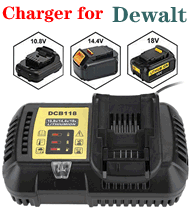Cordless Drill Batteries
- Bosch Cordless Drill Battery
- Makita Power Tool Batteries
- Dewalt Power Tool Battery
- Milwaukee Cordless Drill Battery
- Dyson Vacuum Cleaner Battery
- Ryobi Power Tool Battery
- Panasonic Cordless Tool Battery
- Black & Decker Drill Batteries
- Paslode Power Tool Battery
- Hitachi Cordless Drill Batteries
- AEG Power Tool Batteries
- Metabo Drill Batteries
- Worx Power Tool Battery
- Irobot Vacuum Batteries
- Dremel Cordless Drill Battery
- Drill Battery Charger
Top Sale Drill Batteries
How To Recondition A Cordless Drill Battery
Your cordless drill can deliver good performance for many years if you use it and treat it with care. But your drill battery is likely to die out much before that, making your cordless drill virtually useless. But if you know the correct battery reconditioning methods, you can make the battery work like new for a really long time.
Eventually all drill batteries lose their capacity to hold a charge and deliver optimal power. But reconditioning can revive and rejuvenate batteries that you thought were dead. What you have to do depends a lot on the chemistry of the battery.
Newer cordless drills might come with Lithium-ion batteries, but NiMh is still a popular choice because it keeps the over all cost of tool low. Lithium-ion (Li-ion) batteries are more expensive.
Nickel Cadmium (Ni Cad) and NiMh are two common kinds of batteries you will find in cordless drills.
The two main reasons for Ni based drill batteries dying out are:
- Memory effect
- Crystal formation
Reconditioning to Remove Memory Effect
You've probably heard term "Memory Effect". "Memory Effect is the phenomenon that makes a Dewalt power tool battery lose its capacity to deliver a full charge. It happens more with NiCd batteries much less with NiMh and none whatsoever with Li-ion. In other words only the Nickel based batteries (Ni) suffer from memory effect."
When a battery is repeatedly partially discharged, it only remembers the last amount of charge it held. If more power is demanded the next time, it shuts down completely as if to protest against the extra work. That in short is the memory effect.
The simplest way to remove a memory effect from a cordless drill is to make it go through a reconditioning charge cycle.
In order to do this:
- Charge the drill fully.
- Discharge it completely under zero load, i.e. allow the drill to run on its own till it stops. People usually accomplish this by taping the trigger in an ON position.
- Charge the battery fully again.
If this procedure improves the performance of the battery then repeat it only after at least one month.
Caution: Do not try this with a battery that's working properly already. You should charge a normally functioning battery whenever it loses substantial power to function. Do the deep discharge described above only when you are trying to recondition a battery that doesn't work properly anymore.
Important Note: Check the user manual of the cordless drill. Your charger may be equipped with the ability to deep charge/ recondition the battery. Follow the instructions, if any, before you try this. If this doesn't work, it may be time to buy a new battery.
Reconditioning Battery To Remove Crystallisation
NiMh batteries are less prone to the memory effect. In fact many tool manufactures will tell you that their cordless drill is completely free from this effect. This is somewhat true. Memory effect is more common in low drain devices like cordless phones. A cordless drill draws a lot of power, and in bursts.
Modern batteries suffer a lot less from memory effect. Nevertheless batteries in cordless drills still lose their ability to power the tool. It might not be the memory effect but due to the chemical reaction taking place inside the battery every time you charge and discharge it. Newer Nickel based batteries might be less prone to memory effect but they do suffer from "crystalline formation."
Crystalline formation refers to the condition when crystals form on the anode and cathode inside the battery, reducing the surface that comes in contact with the electrolyte. This can severely reduce the current flowing between the terminals of the battery and hence its effective power.
Crystalline formation occurs over the normal life of the battery but happens a lot faster when the battery is overcharged or charged repeatedly without allowing it to discharge completely.
Severe crystalline formation can result in the larger and sharper edges of the crystals causing permanent damage to the cell inside, facilitating rapid discharges and irreversible malfunction of the battery.
"A battery that hasn't been reconditioned in over one month may begin to show effects of crystalline formation. After five months there will be a noticeable degradation in battery performance. After six months there might be permanent and irreversible damage inside your power tool battery."
- So its good to recondition your Nickel drill battery once in 30-45 days. Reconditioning requires the battery to be completely discharged to a voltage of 1V per cell. This kind of discharge is the most easily performed by following the deep discharge method described above for removing memory effect.
- Battery reconditioning devices are available in the market for reasonable prices. If you can find one, a reconditioning charger is a good investment if you use cordless drills and other battery powered tools.
- Check your user manual. The charger that came with your drill may already have the reconditioning function in it. Many modern tools come with the guideline that "its okay to leave the battery in the charger when not using it." This is because the charger takes the battery through the proper reconditioning and maintenance cycle when required.
- If none of these methods are possible perform the "deep discharge" like we mentioned under reconditioning of memory effect. Caution: Do not perform manual deep discharges too often. It also causes stress to a healthy battery.
Reconditioning A Li-ion Drill Battery
New, modern and expensive cordless drills might also come equipped with Lithium-ion batteries. These batteries are different from the aforementioned Nickel based batteries in every possible way. The entire chemistry is different and so is the behaviour. Li-ion Milwaukee cordless drill batteries have no memory effect and hate deep discharges.
The best way to maintain your Li-ion batteries is to:
- Charge it frequently without letting it drop below 20-30% charge.
- Operate it between 30%-90% charge without either charging or discharging it fully. This will increase the charge cycles of the battery many times.
- Operate and store it in a cool environment as much as possible. Performance and capacity decreases in high temperatures.
- Store the battery in a partially charged state of 40-50%.
- Recondition it by using the drill normally till power drops and give it a full charge.
Li-ion batteries are smart batteries with a smart circuit built into them. Their chargers also usually know how to charge them properly.
Its not that important to charge the battery till only 80-90%. You can charge it fully before use. It is more important to not discharge it completely. There are many ways of reconditioning a dead Li-ion battery.


Manufacturers' names and models are used for reference purposes only. Prices subject to change. Errors and omissions excepted. Contact centres may be monitored or recorded. © 2010-2025 All rights reserved.

